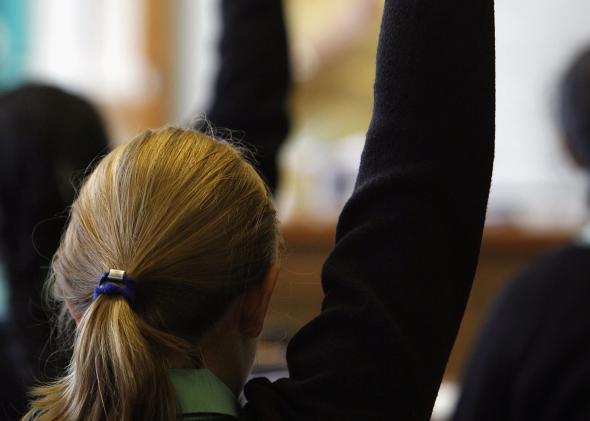Jessica Lahey, who I previously criticized for a piece defending the micromanaging of girls’ clothes, is back in the Atlantic again, writing about how she’s trying to root out uptalk and baby speak in her female students. Uptalk is that tendency to make statements sound like questions by lilting a bit at the end. Baby talk—which, I fully admit, nauseates me as well—is just what it sounds like: purposefully pitching your voice higher to sound more babylike and pleasing to men who blanch at female expressions of authority and confidence.
It doesn’t take a Ph.D. in sociology to see that both kinds of talk are the direct result of women’s disempowerment, vocal tics that allow women to express their opinions without seeming too forceful. (Indeed, as young women grow more powerful in the world, they’ve switched over to another vocal tic that brims with confidence, called vocal fry. Unsurprisingly, as women can’t do anything right, this also has its detractors.) Lack of confidence, Lahey allows, is a major factor, which is why she ignored it for years out of fear she would “instill more self-doubt or dampen their enthusiasm for my class.” She even cites a psychotherapist who recommends looking at root causes instead of just focusing on the talk itself. Despite all this, Lahey’s story of a girl who quits with the baby talk treats the vocal tic as a bad habit to be broken, rather than a symptom of a larger problem:
After class one day, I finally decided to speak to a sixth grade student who was a frequent babytalk and upspeak user. We sat down in my office during snack time, and, over our herbal tea and cookies, we talked about why she uses such a high-pitched voice at some times and not others. I’d heard her on stage, when she’d inhabited a character in her fifth-grade play, and her voice dropped down into an authoritative and confident place. She talked about the pressures she’d faced, living in the shadow of a superstar older sibling, her tense relationship with her mother, and her worries about living up to her parents’ expectations. That conversation turned into a three-year-long effort to identify when and why she shifts into baby voice. Once we’d done that, we worked together to get out of that doubting voice and down into a definitive, confident chest voice rooted in her core, a voice worthy of the weighty insights she shared in class.
The girl went on to be a class leader. “At graduation, she gave a speech describing her long battle with self-doubt, and the pride she experienced as she learned how to have confidence in her own ideas and her ability to express herself,” Lahey writes. It seems, then, the girl saw her journey as more of an internal one instead of just a matter of what kind of voice she used. The interventions that seem to have worked were more positive ones, such as public speaking lessons and teachers taking the time to actually listen to the girl. One wonders if the three year process would have shortened if the confidence-building had started earlier, instead of forcing the girl to go through a phase of having her uptalk and baby speak monitored heavily first.
The problem here is not the uptalk or the baby speak, but what these things are symptoms of. By making the way girls talk the focus, instead of asking hard questions about why girls feel the need to be apologetic and simpering in the first place, I worry that Lahey might be conveying the wrong message to other educators, encouraging them to police uptalk in lieu of examining root causes. What girls need is people to listen to them, cheer-lead for them, and believe in them. Maybe this girl became a different person just because she changed the way she talked. But the likelier story is that her growing confidence led to a more confident way of expressing herself, and that cannot be overlooked.
